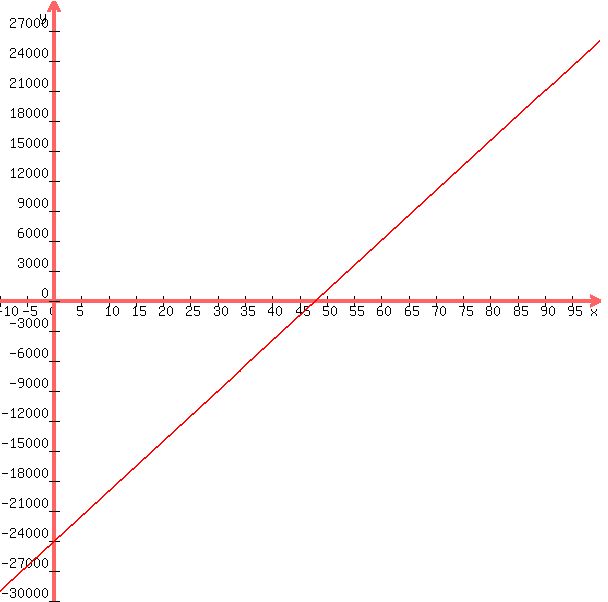Question 271635: Social Security benefits. If you earned an average of
$25,000 over your working life and you retire after 2005 at
age 62, 63, or 64, then your annual Social Security benefit
will be $7000, $7500, or $8000, respectively (Social
Security Administration, www.ssa.gov). There is a linear
equation that gives the annual benefit b in terms of age a for
these three years. Find the equation.
Answer by Theo(13342)   (Show Source): (Show Source):
You can put this solution on YOUR website! your point pairs are (x,y) = :
62,7000
63,7500
64,8000
the slope of the equation will be:
(8000 - 7000) / (64 - 62)
this becomes 1000 / 2 = 500
the equation will be y = 500 * x + b
take one of the points and replace x and y with it.
take the 63,7500 pair.
the slope intercept form of the equation becomes:
7500 = 500*63 + b which becomes:
7500 = 31500 + b
subtract 31500 from both sides of this equation to get:
b = -24000
that's the y-intercept of the equation which is the value of y when x = 0
your equation is:
y = 500x - 24000
a graph of your equation is shown below:

a closer view of the graph to show the years of interest better is shown below:

you can see that y = 7000 when x = 62 and y = 7500 when x - 63 and y = 8000 when x = 64.
the 3 horizontal lines are at y = 7000, 7500, 8000 respectively.
|
|
|